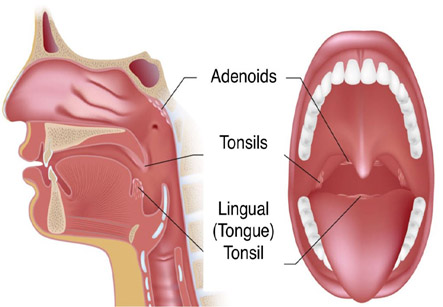Adenoidectomy
Introduction
Adenoid removal is a surgery to take out the adenoid glands. The adenoid glands are lymphoid organs situated behind the nose above the roof of the mouth. Air passes over these glands while breathing. The adenoids can also be taken out along with the surgery to remove tonsils in children.
Indications for adenoidectomy:
A doctor or ENT surgeon can recommend this procedure in situations of:
1. The child’s airway is blocked by the enlarged adenoids. This may present as
• Frequent snoring
• Obstruction in nose causing difficulty in breathing
• Sleep apnea or episodes of not breathing during sleep
We have all the information you need about public and private clinics and hospitals that provide ENT surgeries in Iran, Islamic Republic Of with the best quality and lowest possible prices

2. Chronic or persistent ear infection having following features
• Continued even after antibiotic treatment.
• More than 5 episodes per year
• More than 3 episodes per year for two consecutive years
• Causes the child to miss school very often
3. For recurrent and multiple episodes of tonsillitis
The adenoids normally shrink as children grow older. As an individual becomes a teenager or older, the adenoids diminish in size and cannot cause obstruction. Adults rarely need this surgery.
Diagnosis:
There are no lab tests to diagnose the conditions of adenoids. However, imaging studies may help.
• Lateral neck radiograph – it is the main imaging study for evaluation of the adenoids. A lateral neck X-ray which visualizes nasopharynx also shows adenoids. There are many measurements of the nasal cavity and nasopharynx developed to assess the degree of airflow obstruction caused by adenoids.
• CT scan– it is not used normally to evaluate the adenoids. However, a CT scan performed to evaluate the sinuses and nasopharynx can occasionally provide the valuable information on the size of the adenoids. A plain sagittal scout film can also be performed along with the CT scan.
• MRI – this imaging study is done only in conditions where the adenoids look abnormal in above studies or if a mass lesion is suspected.
Diagnostic Procedures:
• Flexible or rigid nasopharyngoscopy- this can be done in the doctor’s clinic to evaluate the nasopharynx and adenoids.
• Biopsy – biopsy is done very rarely to confirm the diagnosis in case of a nasopharyngeal mass in an older child or an adult does not appear like adenoid.
Preparation for the procedure:
1. Any medicines given to the child for thinning of blood such as aspirin should be stopped at least a week before the surgery. Nasopharyngeal surgeries cause more bleeding usually.
2. The child should not have anything to eat or drink after the midnight of a day before surgery.
3. A consent form is signed by the parents of child regarding the procedure and the risks involved.
4. Some medications or sprays are given before surgery to decongest the nose.
Description of procedure:
1. This surgery is done in operating room.
2. The child is given general anesthesia for adenoid surgery. This means they remain asleep and no pain is felt.
3. A small instrument is placed in the mouth to keep the mouth open.
4. A spoon shaped instrument which cuts the soft tissue is used to remove the adenoids.
5. It can also be done by other methods. Sometimes, the surgeon uses an electric device called as electrocautery to heat the tissue, remove it, and to stop bleeding.
6. A newer method uses radiofrequency waves to destroy the adenoids. This is called as ablation.
7. After the removal, an absorbing material like gauze packing is used to control the bleeding.
8. The child is shifted to the recovery room after surgery and monitored till the general anesthesia wears off and the child is awake as well as can breathe easily.
9. This surgery can be done as day care procedure or a stay of at least a day is recommended by some surgeons.
After going home, a 3 to 5 days period of rest is advised. However, complete recovery takes about 1 to 2 weeks.
Risks:
1. Anesthesia related risks like reactions to medications as well as breathing problems
2. Surgery related risks such as bleeding and infection.
After this procedure:
1. The children can breathe more easily through nose.
2. Ear infections decrease in frequency
3. Milder and fewer sore throats occur.
4. Rarely, adenoids can grow back, but this is usually harmless.